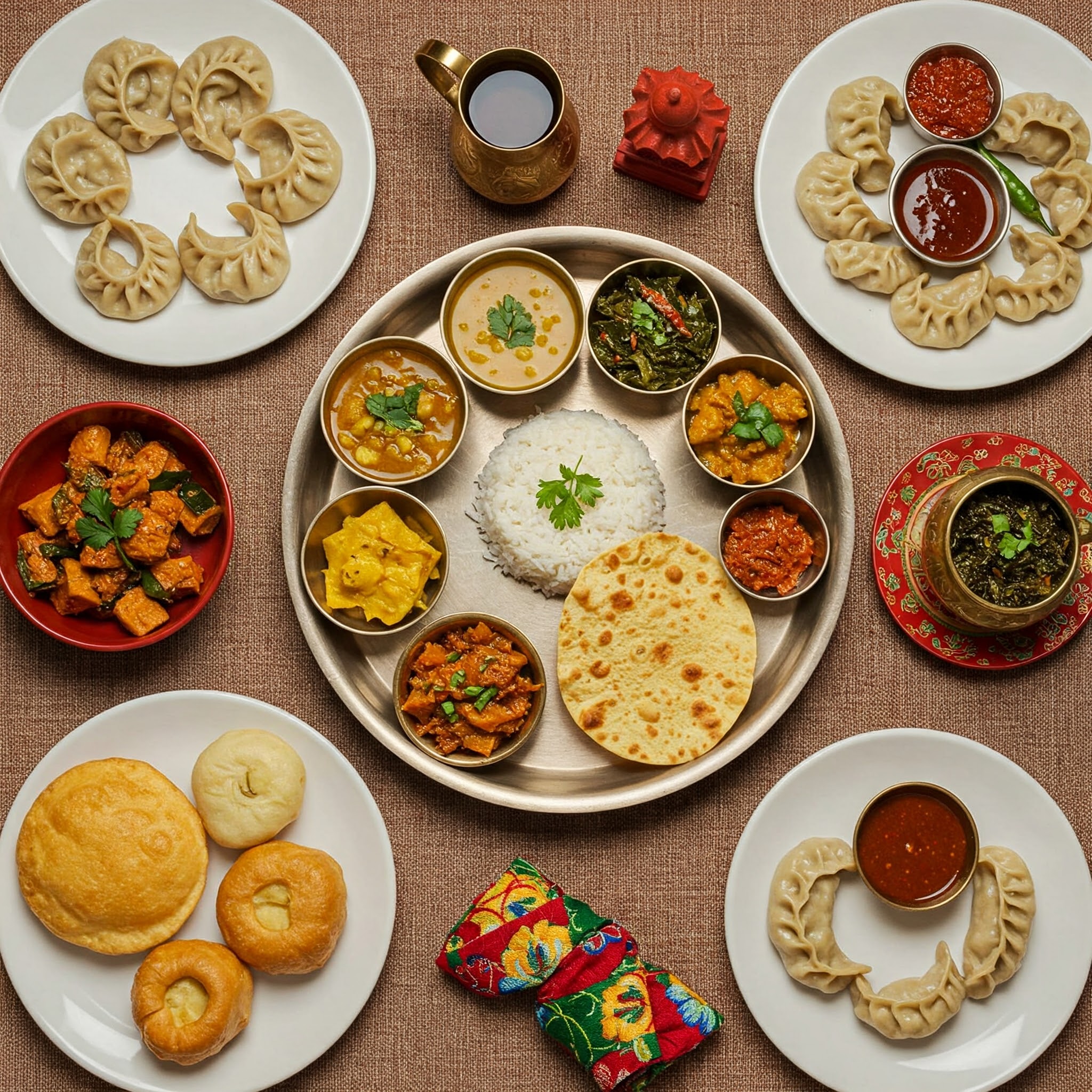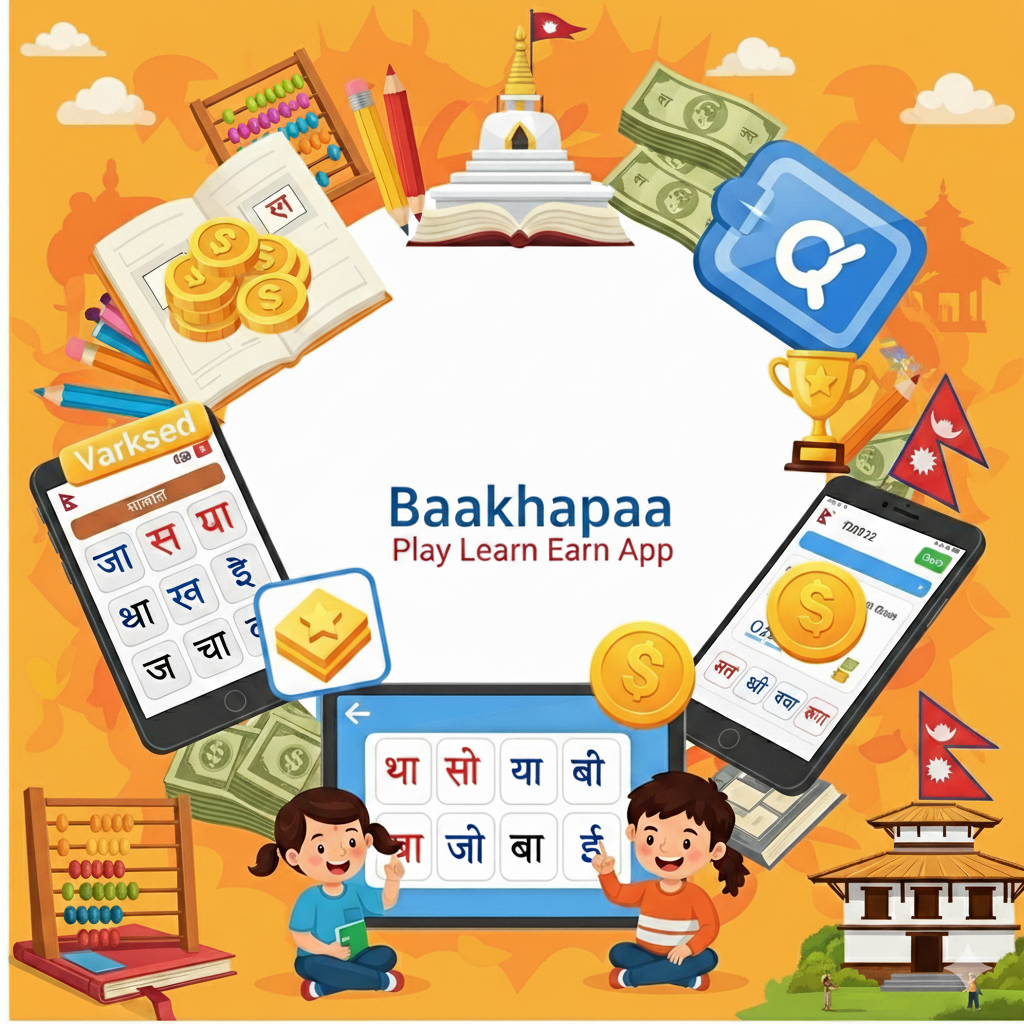Taste of the Himalayas: 7 Must-Try Nepali Foods (and Where to Find Them)
Nepal, the land of soaring peaks and ancient temples, offers more than just breathtaking scenery; it boasts a rich and diverse culinary heritage waiting to be explored. Nepali food, a unique blend of influences from its neighbors India and Tibet, combined with indigenous traditions, is a delightful adventure for the taste buds. This Nepal food guide will introduce you to 7 must-try dishes Nepal offers, delving into their ingredients, taste profiles, cultural significance, and where you might find the most authentic versions. Get ready to discover what to eat in Nepal, from the comforting staple of Dal Bhat to the beloved momos and unique flavors of Newari cuisine.
The Heart of Nepali Cuisine: Simplicity and Flavor
Traditional Nepali cuisine is characterized by its use of fresh, locally sourced ingredients and a harmonious blend of spices like cumin, coriander, turmeric, ginger, garlic, and timur (Sichuan pepper). Meals are often wholesome, nutritious, and deeply satisfying. Whether you're trekking in the mountains or exploring ancient city squares, food is an integral part of the Nepali experience.
7 Must-Try Nepali Foods:
Dal Bhat Tarkari: The National Soul Food
- Description: This is the quintessential authentic Nepali thali and the daily staple for most Nepalis. Dal is a lentil soup (can be made from various lentils like black, yellow, or red), Bhat is steamed rice, and Tarkari is a seasonal vegetable curry. It's often accompanied by Saag (leafy greens, usually spinach), Achar (spicy and tangy pickles), and sometimes a small portion of meat (chicken, mutton, or buff).
- Taste Profile: Comforting, savory, and well-spiced (though not always overly hot). The combination of textures and flavors is incredibly satisfying.
- Cultural Significance: Dal Bhat is more than just a meal; it's a source of energy and sustenance, often eaten twice a day. It reflects the agricultural backbone of the country and the resourcefulness of its people. The phrase "Dal Bhat power, 24 hour!" is a common saying among trekkers for a reason!
- Where to Find It: Everywhere! From local homes and simple eateries (Thakali kitchens are renowned for excellent Dal Bhat) to tourist restaurants across Nepal. Many trekking lodges also serve hearty portions.
- Simple Dal Bhat Recipe (Dal component - serves 2-3):
- Ingredients: 1/2 cup red lentils (masoor dal), rinsed; 2 cups water; 1/2 tsp turmeric powder; 1/2 tsp cumin powder; salt to taste; 1 tbsp ghee or oil; 1/2 tsp cumin seeds; 1 dried red chili (optional); 1 small onion, chopped; 1 clove garlic, minced; 1 small tomato, chopped.
- Instructions:
- Cook lentils with water, turmeric, cumin powder, and salt until soft (about 15-20 minutes in a pressure cooker or 30-40 minutes in a pot).
- In a separate small pan, heat ghee/oil. Add cumin seeds and dried chili (if using). Once they splutter, add chopped onion and sauté until golden. Add minced garlic and cook for another minute.
- Add chopped tomato and cook until soft.
- Pour this tempering (onion-spice mixture) into the cooked dal. Simmer for another 5 minutes.
- Serve hot with steamed rice (Bhat) and vegetable curry (Tarkari).
Momos: Nepal's Favorite Dumplings
- Description: These delightful steamed or fried dumplings are a national obsession. The dough is typically made from white flour, and the filling can be minced meat (buff - water buffalo, chicken, pork) or vegetables (cabbage, carrots, onions, paneer).
- Taste Profile: Savory, juicy, and often seasoned with ginger, garlic, coriander, and cumin. They are almost always served with a tangy and spicy tomato-based dipping sauce called achar or chutney.
- Cultural Significance: Though Tibetan in origin, momos have been wholeheartedly adopted and adapted into Nepali cuisine. They are a go-to snack, appetizer, or even a full meal.
- Where to Find Them: Ubiquitous! From street food Nepal vendors in bustling Kathmandu alleys to high-end restaurants. For some of the best momos in Kathmandu, explore areas like Thamel, Basantapur, or ask locals for their favorite momo pasal (momo shop). Look out for variations like Jhol Momo (dumplings served in a flavorful broth) and C-Momo (tossed in a spicy chili sauce).
Newari Cuisine: A Culinary Heritage of the Kathmandu Valley
- Description: The Newars, the indigenous people of the Kathmandu Valley, boast one of the most diverse and unique cuisines in Nepal. A traditional Newari cuisine guide would feature a Khaja Set or Samay Baji – a platter with beaten rice (chiura), spiced fried buffalo meat (chhwela), roasted soybeans (bhatmas), boiled eggs, various pickles, and sometimes Aloo Tama (potato and bamboo shoot curry). Other notable Newari dishes include Chatamari (often called "Nepali Pizza" - a rice flour crepe with toppings), and Yomari (a sweet, steamed rice flour dumpling filled with chaku - molasses and sesame seeds, or khuwa - condensed milk, especially popular during the Yomari Punhi festival).
- Taste Profile: Newari food is known for its bold, often spicy, and complex flavors, utilizing mustard oil and a wide array of spices.
- Cultural Significance: Newari food is deeply intertwined with their festivals, rituals, and social life. Many dishes are prepared for specific occasions.
- Where to Find It: Authentic Newari eateries in the old towns of Kathmandu, Patan, and Bhaktapur. Look for restaurants specifically advertising "Newari Khaja Ghar."
Thukpa: Himalayan Noodle Soup
- Description: A hearty and warming noodle soup with Tibetan roots, Thukpa is perfect for Nepal's cooler climates and mountainous regions. It typically contains noodles, vegetables (like carrots, cabbage, spinach), and often meat (chicken, buff, or sometimes egg).
- Taste Profile: Savory, brothy, and mildly spiced, often with a hint of ginger and garlic. Some variations can be spicier.
- Cultural Significance: A staple in Sherpa communities and popular among trekkers for its nourishing qualities.
- Where to Find It: Widely available in restaurants in Kathmandu (especially in Boudha and Thamel), Pokhara, and along trekking routes in the Himalayas.
Sel Roti: The Sweet Ring Bread
- Description: A traditional Nepali homemade, sweet, ring-shaped bread or doughnut made from rice flour. The batter, consisting of rice flour, water, sugar, ghee, and sometimes spices like cardamom or cloves, is deep-fried until golden brown and crispy.
- Taste Profile: Slightly sweet with a crispy exterior and a soft, chewy interior.
- Cultural Significance: Sel Roti is a festive food, commonly prepared during major festivals like Dashain and Tihar, as well as for weddings and other special occasions.
- Where to Find It: Made in homes during festivals, but also available from street vendors and some sweet shops, especially in local markets.
Gundruk: The Fermented Delight
- Description: Gundruk is a traditional Nepali dish made by fermenting and then sun-drying leafy green vegetables (like mustard greens, radish leaves, or cauliflower leaves). It has a distinctively tangy and slightly sour flavor.
- Taste Profile: Tangy, sour, and slightly earthy. It's often cooked into a soup (Gundruk ko Jhol) or used as a base for pickles.
- Cultural Significance: A common and beloved part of Nepali cuisine, especially in rural areas, representing a traditional method of preserving vegetables.
- Where to Find It: Served as part of a Nepali thali in many local eateries and restaurants. You can also buy dried gundruk in markets to try cooking it yourself.
Chatamari: The "Nepali Pizza"
- Description: A unique Newari delicacy, Chatamari is a thin crepe or flatbread made from rice flour. It's traditionally topped with ingredients like spiced minced meat (buff or chicken), egg, and chopped onions and tomatoes. Vegetarian versions are also available.
- Taste Profile: The base is slightly crispy, and the toppings provide a savory, spicy, and flavorful experience.
- Cultural Significance: A popular snack or light meal in Newari culture, often enjoyed during festivals and gatherings.
- Where to Find It: Best experienced in Newari restaurants and food stalls within the Kathmandu Valley (Patan, Bhaktapur, Kirtipur).
Embarking on a Nepali Food Adventure
For those keen on a deep dive, consider a Food tour Nepal experience, especially in Kathmandu, which can guide you through hidden culinary gems and street food hotspots. Exploring a Nepali food blog before your trip can also give you more insights and recommendations.
From the comforting embrace of Dal Bhat to the zesty delight of momos and the unique offerings of Newari cuisine, the traditional Nepali cuisine is a journey in itself. So, on your next trip, be sure to explore these must-try dishes Nepal has to offer!
Hungry for more? Head over to our website after reading to take the "Nepali Food Connoisseur" quiz and earn points while testing your culinary knowledge!
Please login to leave a comment.


 Rakesh Rajbhat
Rakesh Rajbhat




